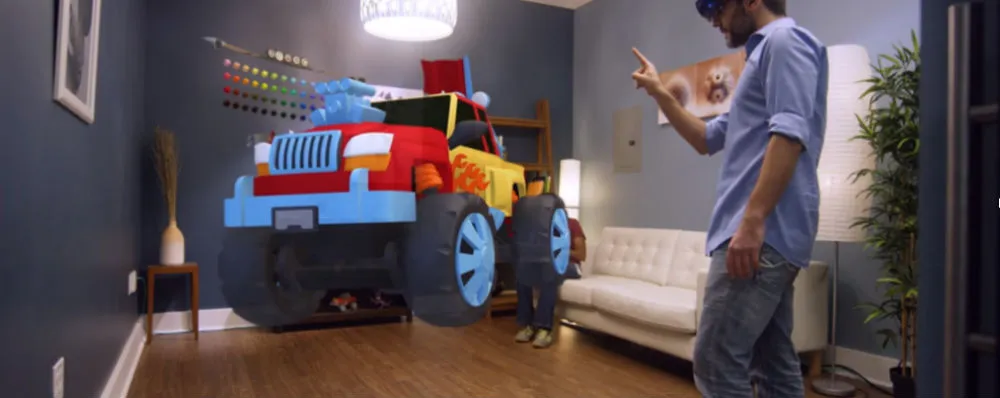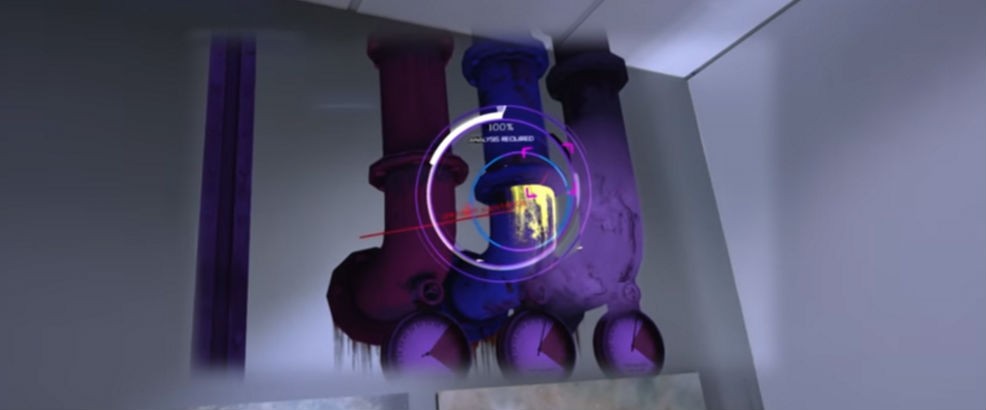Microsoft recently revealed that the HoloLens would start shipping to developers on March 30. In addition to that announcement, they’ve also detailed the first games and experiences that will be available using the self-contained mobile AR device.
In another blog post, Kudo Tsunoda, Corporate Vice President for Windows apps, outlines many of the out-of-the-box experiences that will be available to developers when the first units ship. Among them are HoloStudio, a program that allows you to manipulate and develop 3D augmented reality applications while using the HoloLens. Then there’s also an enhanced version of Skype, which is designed to be used between people, even if only one of them is using the HoloLens. A video shows a brief demonstrative example where the non-HoloLens user can draw on her screen, which displays in the HoloLens user’s actual world through AR. The last native application is HoloTour, which provides 360-degree photo and video viewing while using the HoloLens.
In addition to those experiences, Microsoft also unveiled three games, the first of which is Fragments. In Fragments, you’re the protagonist in a high-tech crime thriller that takes place in your own home.
It’s an impressive concept, as the demo shows not only fully animated 3D models of characters standing in living rooms, talking to you, but also sitting on your couch and even moving around. In one portion of the video, we see a giant aquarium-like environment floating in the middle of the room. It doesn’t seem to be an overly robust game by any means, as it’s designed as a representative demonstration for developers to get a taste of what’s possible, but it seems to indicate AR games can be developed as more than just simple experiences like Face Raiders on the 3DS.
But if you were actually a huge fan of Face Raiders on the 3DS and can’t wait to see the gritty, sci-fi follow-up on a different platform, then RoboRaid is made just for you. It’s a shameless spin off of the same core idea, even borrowing half a word from the 3DS pack-in’s title, by allowing you to shoot at and dodge evil alien robots as they fly around your room.
First-person shooters and action games in general have huge potential in AR. I imagine a world where I can play Time Crisis in AR by ducking behind my couch with nothing but my hand in the shape of a gun and a visor strapped to my face, but we’re clearly a few years away from that possibility.
Then there’s Young Conker, a game that takes the once lauded character and employs him in a way that can only be described as baffling. The concept of an AR platformer isn’t without interest, but it seems like it could be done in a much more elegant way. Judging from the overwhelming dislikes on the YouTube video since it was announced, the majority of viewers seem to agree.
Conker will bounce, jump, and fly around your room, interacting with objects and adapting to the environment. But even from just viewing the demo video above, you can clearly see how limiting the HoloLens’ field of view is while playing any game. I can only imagine how difficult it would be to track characters and action with such a tiny window to peer through.
While each of those experiences are excellent in theory, one gaping problem that phases them is the HoloLens’ extremely limited field of view. When using the device, the lenses don’t actually transform the entire world around you, as the demo videos sometimes imply. Instead, it’s actually a very small window of your vision, leaving the borders of your eyesight and the periphery around you completely unaffected. You can see a peek into this concern in the screen capture below, taken from from the Fragments demo video near the top of this article:
The constrained view works fine when gazing at pipes on a wall, but if you’re trying to truly immerse yourself in another world or actually believe your own world is inhabited by fictional objects, a more holistic approach is absolutely essential.



























